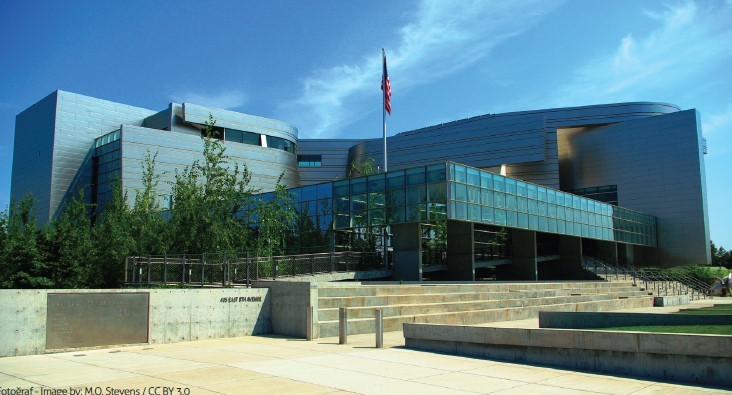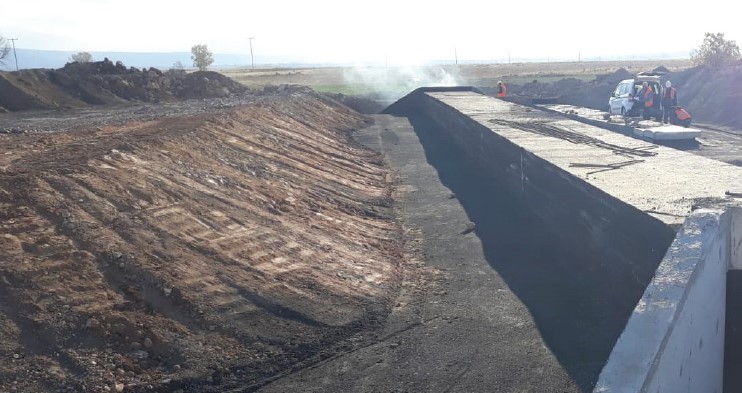About the Project
Ankara-Niğde Motorway is the unfinished section of the TEM (Trans European Motorway) Motorway, which starts in Edirne, passes through Istanbul and is completed in Şanlıurfa by reaching Bolu, Ankara, Pozantı via Adana and Gaziantep and planned to be finished in the future.
By the completion of the route, Turkey will be connected north to south as an uninterrupted controlled access.
For this reason, this interrupted section carries great importance for the continuity of the line. It is also important that this route will provide ease of access to the tourism points which pass along the route such as Tuzgölü, Nevşehir Derinkuyu, Göreme, Cappadocia, etc.
Within this motorway; there are 4 viaducts total 3472m long, 24 overpass bridges, 3 underpass bridges, 19 intersection bridges, 1 river crossing bridge, 436 box culverts, 126 underpasses, 2 maintenance management centers, 6 parking areas, 4 units service area, 12 fee collection stations and 12 intersections.
Motorway Project Stages
The concept of planning in engineering services can be described as, gaining the most socioeconomic beneficiary while producing the appropriate structure with minimum resource expenditure.
From this point of view, it is inevitable that planning techniques are widely used at every stage of highway planning construction and operation phases.
Planning studies are generally; to ensure that the activities related to the service are carried out in the best conditions, to determine when and which standards should be done, to determine road networks, road standards and to reduce energy dependence by increasing energy efficiency, reduce investment and operating costs and minimizing the environmental impact and cost for the route it passes through.
Study-Project
All the cross sections taken from the field are drawn. Throughout the axis, the black levels are drawn on the horizontal-vertical scale to obtain the land profile. Red line is passed by taking into consideration the survey sheet and cross sections. The slopes and red elevations of the detected red line are calculated.
The genus and dimensions of the engineering structures to be placed where the road axis cuts the stream beds should be determined on the board and on site. The determined red line is inspected by visiting the field and corrected if there are necessary places to change.
Ground investigation report is prepared by ground studies to determine the soil information required for the project. By determining maximum allowable values for horizontal curves, superelevation calculations are done.
After the preparation of the ground investigation report, filling and splitting areas are calculated by processing the gauge into the sections. Soil volume calculations are made by taking into consideration the compression and blistering factors given in the research report.
Environmental and Social Impact Assessment
(ESIA) Process
The ESIA is an environmental and social assessment process prepared in accordance with the international standards of credit institutions.
The ESIA process is based on EIA (Environmental Impact Assessment) studies conducted according to the local EIA Regulation and integrates current studies with additional environmental and social studies.
A full-scale EIA process was carried out for the project, including all highway routes, as well as quarries and borrowed pits. The Project’s National EIA Report was prepared in 2016 by a competent local consultancy company (DOKAY Engineering and Consulting Ltd.) in accordance with the national EIA Regulation and other regulations in force According to that EIA Report, EIA Positive Decision was obtained from the Ministry of Environment and Urbanization in 2016.
Within the scope of this process, in July 2015, public participation meetings were held in six provinces, including Ankara, Konya, Aksaray, Kırşehir, Nevşehir and Niğde cities on the motorway route. More than 30 official institutions participated in scoping, observation and evaluation of the EIA Report.
In addition, the Environmental and Social Action Plan (ESAP), Livelihood Reconstruction Plan (GRP) Framework and Resettlement Action Plan (RAP) Framework were prepared for the project.
SRM Consultancy is responsible for carrying out the current situation social work, evaluating the possible social impacts and preparing the Stakeholder Engagement Plan (SEP), RAP Framework and the GRPD Framework.
Regio Cultural Heritage Management Consultancy has also prepared the Cultural Heritage Management Plan by conducting studies on the evaluation of cultural heritage site surveys and potential impacts on cultural heritage.
Land Acquisition
In accordance with the relevant national legislation, the purchase of the required land is/will be carried out primarily by land consolidation or expropriation where this is not the case.
While land consolidation is being carried out by the Ministry of Food, Agriculture and Livestock, General Directorate of Agricultural Reform, expropriation works are covered by KGM. Construction
Soil Stripping
Construction
Soil Stripping
The first phase of road infrastructure works is the removal of all kinds of trees, branches, plants, unnecessary materials within the road construction boundaries defined in the plans and projects.
After the removal of the soil on the road, during the operation of the road superstructure and road structures (fill, cut, bridges, viaducts, tunnels, etc.) weak grounds are detected in order not to cause any problems. After the determination of the weak grounds, excavation works are started.
Excavation works can be explained as; excavation of all kinds of grounds and rocks within the road construction boundaries in accordance with the elevations, slopes and cross-sections shown in the plan projects.
All materials suitable for the construction of the fillings are used in the construction of the base, banquets, in the places of engineering structures and in the backfills-where they are economically and conveniently located.
Filling Works
After the completion of the excavation works, by preventing to damage the road body, drainage works are carried out to remove the underground and surface waters of the road drainage.
Following the completion of drainage works, filling works are started to form the part of the road between the natural ground and the upper part of the road so that the road gauge can be placed in accordance with the vertical lines of the project.
With appropriate materials from cuts, engineering structure and borrows, the slopes shown in the project are filled - in cross sections and elevations.
All fillings are made by laying them in horizontal layers from the floor surface. After the compaction of the filling layer is completed, the quality control test is performed on the road sections determined by the control engineer before the new layer is laid on it.
After the completion of the filling works, the final phase of the road infrastructure and the control phase, which means finishing phase, is started.
In the finishing phase, after completion of the construction of the structures of engineering (bridges, tunnels, culverts, retaining, luffing walls, fortifications, etc.) and earthworks in accordance with the principles specified in, fine leveling of the fine levelling surface, trenches, slopes are done with graders or other leveling machinery with knives and/or hand work in accordance with the shape, size and elevations. Acceptance of the finishing is required to ensure full compliance with the project.
Superstructure
Road superstructure is the road structure that includes coating, base and sub-base layers.
Road substructure works, which includes the works after the end of the soil work level, contains sub-base, foundation and asphalt verilebilayers and concrete covering or parquet covering works in special cases. In today’s highway approach, all kinds of guardrails, vertical and horizontal marking are also included in the superstructure works.

Sub-base
The sub-base layer is the lowest layer placed between the base surface and the base layer and stabilized with suitable binders. The sub-base is generally made on frost-sensitive floor surfaces in the frost-exposed areas or on the base floors with low carrying capacity.
The bottom foundation helps the drainage by absorbing the water from the ground water level as well as carrying the load from the road surface.
Base
It is a grained or treated material with a suitable binder that is placed under a coating layer. The main task of the base layer is to increase the load-carrying capacity of the superstructure by providing a support for the coating layer.
The base layer should be able to withstand high shear stresses due to traffic loads and should be able to remain in balance at high humidity.
Asphalt
Hot mix asphalt pavement consists of homogenous mixing of asphalt cement and aggregated aggregates. Both materials (aggregate and asphalt) must be heated before mixing the aggregates and mixing the asphalt cement in order to ensure proper mixing and workability.
By heating to appropriate temperatures, dried and graded aggregate mixed with one of the above binders in a suitable temperature and period, is called Bituminous Hot Mix. After the heating, weighing, sieving and mixing of the aggregate and asphalt, are carried out in asphalt plants, afterwards they are transported safely by trucks.
It is filled to pavers and laid in order to ensure a smooth and homogeneous surface. After laying, with suitable weight and type of rollers, the mixture is compacted by cylinders at a suitable temperature until it is smooth and until a proper density is achieved.
Concrete Works
Concrete; is a construction material consisting of homogenous mixing of cement, water, aggregate, chemical and mineral additives, which has a plastic consistency first and can be shaped. Concrete is hardened and gains durability after an amount of time.
Structures such as retaining and shoring walls made of hydraulic structures, such as concrete tube, culvert and bridge, for shortening the dimensions of the excavation and filling slopes or for preventing landslides are called as engineering structures.
Bridge
A structure that connects either side of a barrier that is difficult to cross, such as rivers and valleys, or connecting either side of the barrier in order to achieve the traffic flow without passing through another traffic stream.
Viaduct
Pedestal road or bridges in order to pass deep valleys. The viaduct is the name given to the structures that connect the two high points -usally a river dividing a valley- with a bridge.
Culvert
The hydraulic engineering structures used for passing small streams, which are usually formed as a result of continuous flowing, from one side to the other side of the road body.
Concrete Protection and Waterproofing
Reinforced concrete structures under the soil are exposed to moisture, plant roots and organic matter from the soil. These organic materials and moisture corrode the iron in the reinforced concrete. Corrosion occurs after many years, but immediately damages the concrete.
Concrete pulls out the water in the environment “like sugar absorbs water”, and causes it to increase with capillarity. Water entering the body is subjected to freezing-dissolution and cracking concrete.
On the other hand, the plant roots are also quite strong, making itself place where the concrete is the weakest (segregation, etc.) and breaks the concrete over time.
For the reasons mentioned above, bitumen based “anionic” waterproofing products, which are also defined as “tar-whitewash” are used in order to prevent building damage in future. The use of bitumen on concrete surfaces that come into contact with the soil in the viaducts is also indicated in TS 113.
Emülzer Emilkote was preferred and used in this project. Quality tests and consumption control of Emilkote were performed at the field. Then, it is preferred because of its price / quality performance.
 Cem Ercan
Civil Engineer M.Sc.
Project and Technical Sales Manager
Emülzer
Cem Ercan
Civil Engineer M.Sc.
Project and Technical Sales Manager
Emülzer
 Samet Memiş
Civil Engineer
Quality Control Chief
ERG İnşaat
Samet Memiş
Civil Engineer
Quality Control Chief
ERG İnşaat

 Construction
Soil Stripping
Construction
Soil Stripping
 Cem Ercan
Civil Engineer M.Sc.
Project and Technical Sales Manager
Emülzer
Cem Ercan
Civil Engineer M.Sc.
Project and Technical Sales Manager
Emülzer
 Samet Memiş
Civil Engineer
Quality Control Chief
ERG İnşaat
Samet Memiş
Civil Engineer
Quality Control Chief
ERG İnşaat